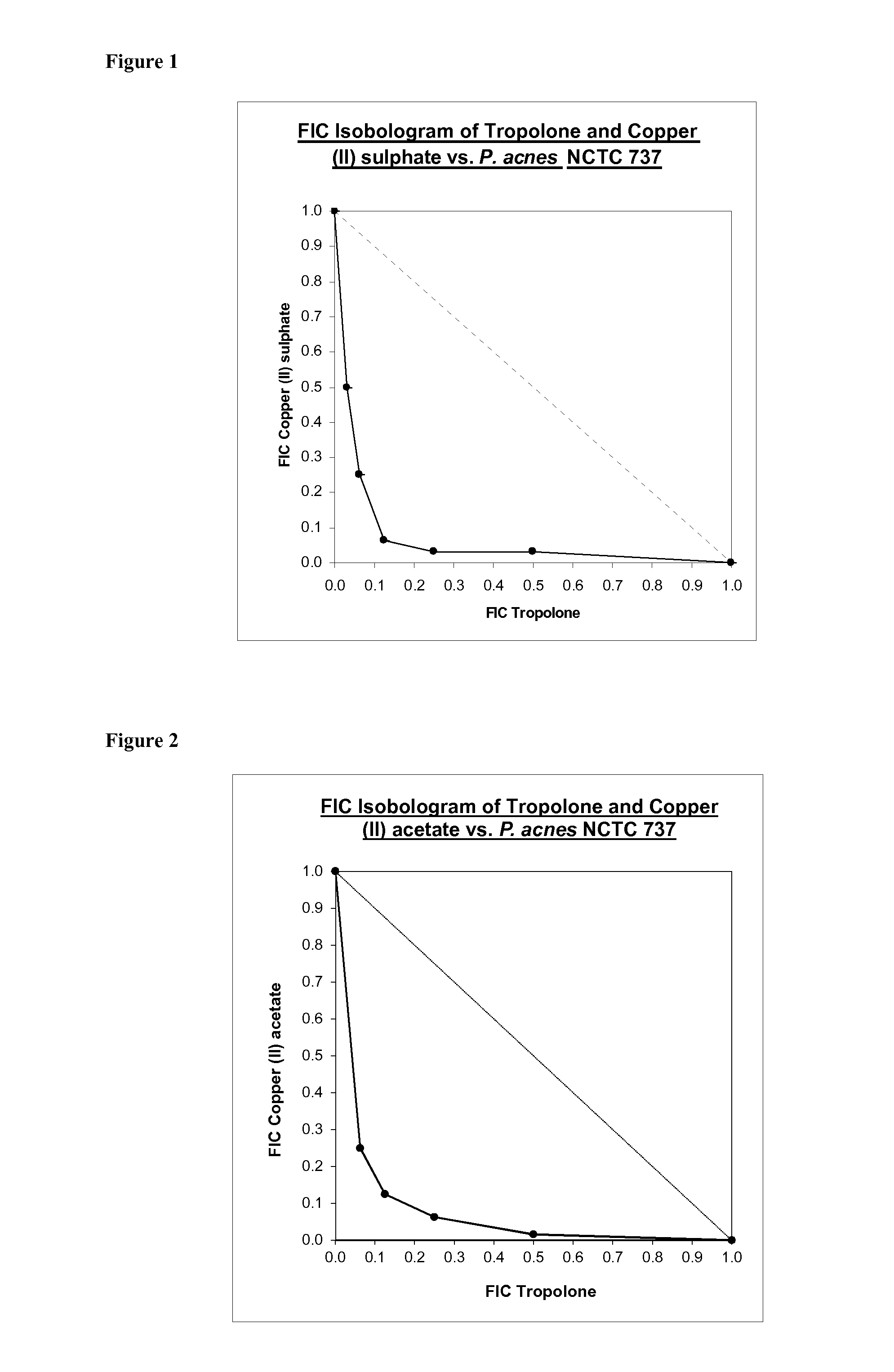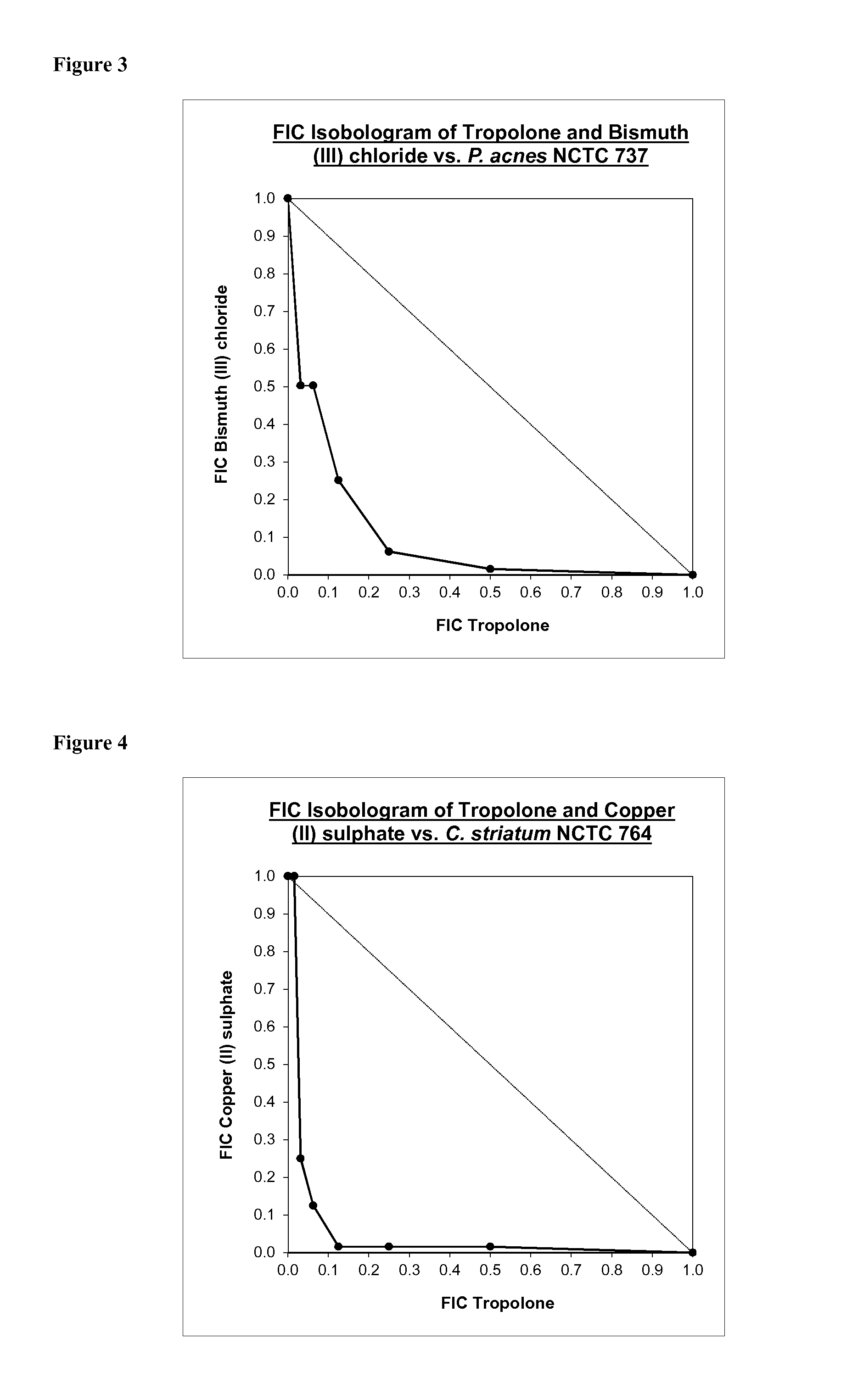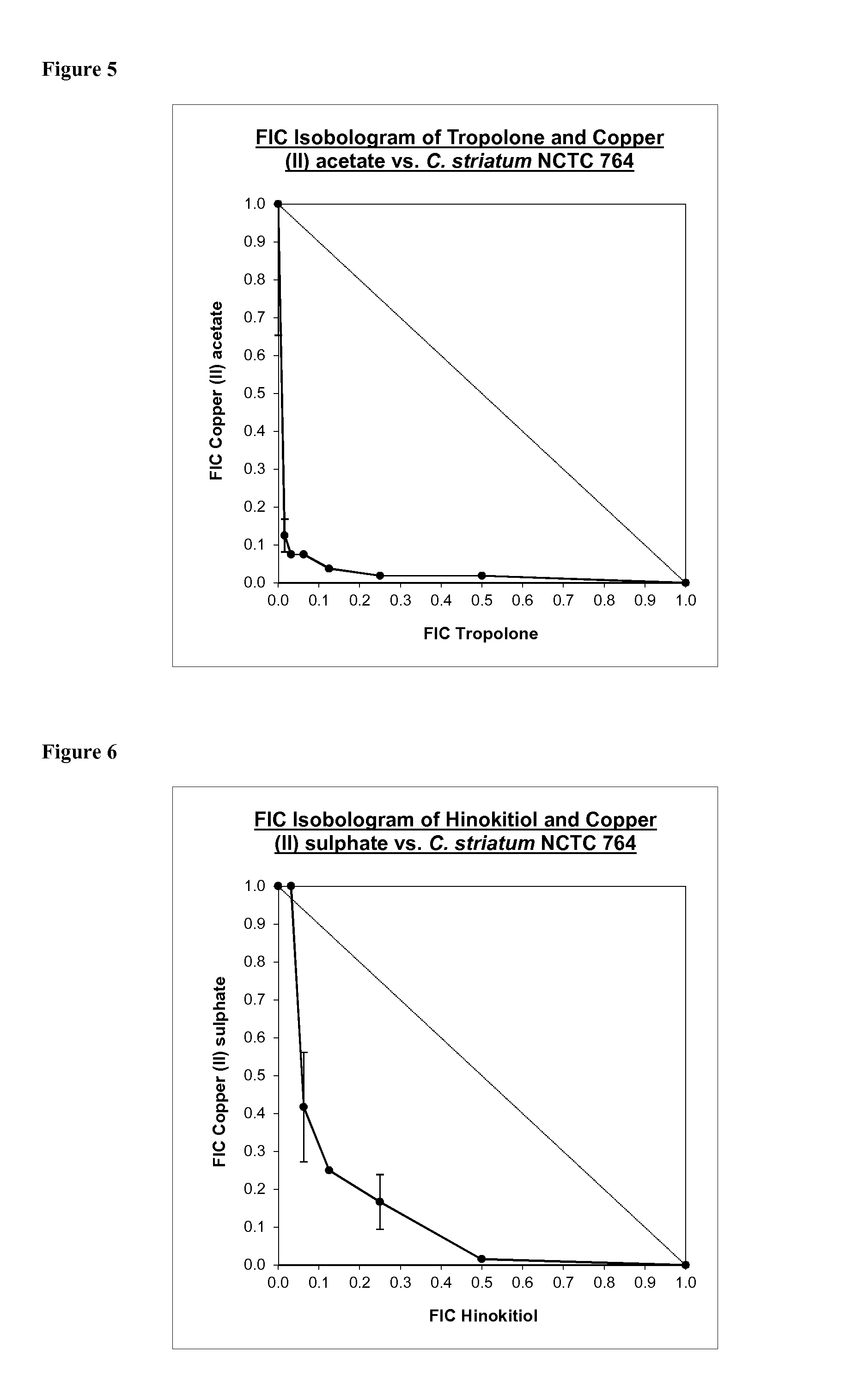New uses
a new type of technology, applied in the field of new uses, to achieve the effect of reducing side effects, reducing undesired properties of formulations, and reducing antibacterial or anti-acne activity
- Summary
- Abstract
- Description
- Claims
- Application Information
AI Technical Summary
Benefits of technology
Problems solved by technology
Method used
Image
Examples
example 1
Activity Against P. acnes (Tropolone+Copper Sulphate)
[0171]The following experiments all used P. acnes NCTC 737 as the test organism.
[0172]MIC, MBC and DDA assays, as described above, were carried out using the test compounds tropolone and copper (II) sulphate pentahydrate (both sourced from Sigma-Aldrich, UK). The two compounds were then subjected in combination to the SDDA assay described above. Increases in zone diameter (mm) were measured with respect to those observed for the copper sulphate (which had showed larger zone diameters during the previous disc diffusion assays on the individual compounds).
[0173]For all the (S)DDA experiments, 200 μg of the tropolone and 12.5 μg of the copper sulphate were loaded onto each disc. The tropolone was dissolved in ethanol and the copper sulphate in deionised water. MIC / MBC experiments were performed in duplicate and (S)DDA experiments in triplicate. The results are shown in Table 1 below.
TABLE 1CopperCoppersulphate +AssaysulphateTropolone...
example 2
Activity Against P. Acnes (FIC Assays) (Tropolone+Copper Sulphate)
[0175]Mixtures of tropolone and copper (II) sulphate, containing various relative proportions of the two actives, were subjected to FIC assays against P. acnes NCTC 737, as described above. The results were used to prepare FIC isobolograms. All assays were conducted in triplicate.
[0176]The overall FICI obtained for the mixtures was 0.19, representing the mean of three replicates. This indicates a synergistic interaction. A representative isobologram is shown in FIG. 1; the dashed line indicates where overall FICIs (ie FICtropolone+FICcopper (II) sulphate) equal 1, which would indicate a purely indifferent interaction. FIG. 1 clearly demonstrates the synergistic activity of the combination of the tropolone and the copper salt against P. acnes NCTC 737.
example 3
Activity Against P. Acnes (Synthetic Sebum Time-to-Kill Assays) (Tropolone+Copper Sulphate)
[0177]Mixtures of tropolone and copper (II) sulphate, containing various relative proportions of the two actives, were subjected to synthetic sebum time-to-kill assays against P. acnes NCTC 737, as described above. All assays were conducted in triplicate.
[0178]The results, including for tests on the individual test compounds, are shown in Table 2 below.
TABLE 2Log10 cfu / mlLog10 cfu / mlLog10Test(T0 hours)(T4 hours)changeControl (+)8.118.20.09Copper sulphate (97.5 mg / L)8.116.58−1.53Tropolone (195 mg / L)8.117.8−0.31Copper sulphate (97.58.113.0*−5.11mg / L) + tropolone (195mg / L)*Lowest detectable level = 3.0 Log10 cfu / ml
[0179]At the concentrations tested both the tropolone and in particular the copper sulphate demonstrated some level of antimicrobial activity against P. acnes NCTC 737 in a lipid environment. However, when the tropolone and the copper salt were combined a synergistic effect was observed...
PUM
| Property | Measurement | Unit |
|---|---|---|
| temperature | aaaaa | aaaaa |
| temperature | aaaaa | aaaaa |
| pH | aaaaa | aaaaa |
Abstract
Description
Claims
Application Information
 Login to View More
Login to View More - R&D
- Intellectual Property
- Life Sciences
- Materials
- Tech Scout
- Unparalleled Data Quality
- Higher Quality Content
- 60% Fewer Hallucinations
Browse by: Latest US Patents, China's latest patents, Technical Efficacy Thesaurus, Application Domain, Technology Topic, Popular Technical Reports.
© 2025 PatSnap. All rights reserved.Legal|Privacy policy|Modern Slavery Act Transparency Statement|Sitemap|About US| Contact US: help@patsnap.com



